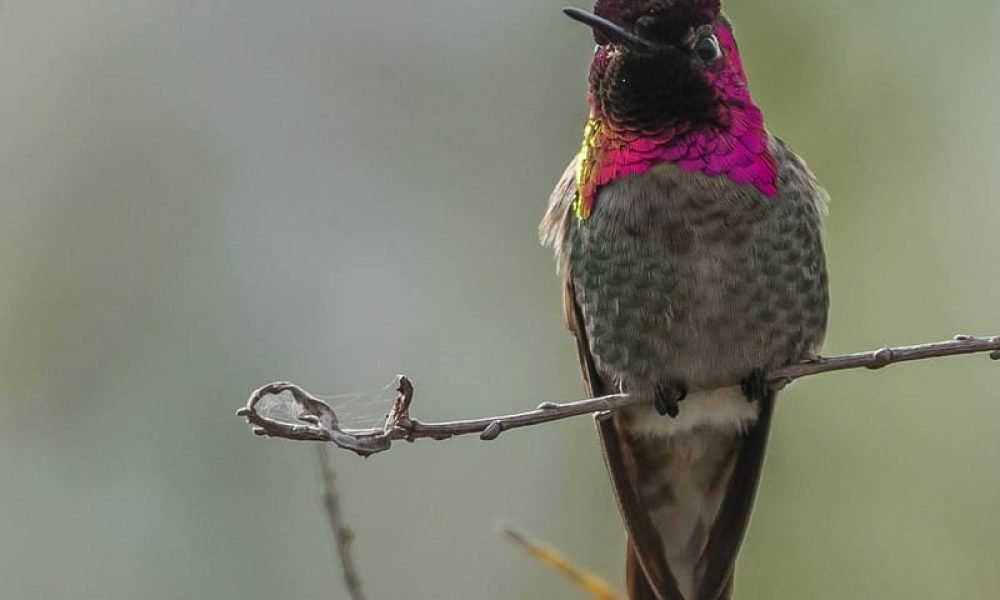
There are 9 different species of hummingbirds that can be seen across the state of Colorado and these hummingbirds are:
- Rivoli’s Hummingbird
- Ruby-throated Hummingbird
- Black-Chinned Hummingbird
- Anna’s Hummingbird
- Costa’s Hummingbird
- Broad-tailed Hummingbird
- Rufous Hummingbird
- Calliope Hummingbird
- Broad-Billed Hummingbird
Want to learn more? Take a look at the Compete Hummingbird Guide Book – a classic!
The Broad-tailed hummingbird and the Rufous Hummingbird are the most common of the aforementioned species to be seen in Colorado.
The climate in Colorado varies around the state but it mainly has a continental climate. In Colorado there are 41 different state parks and there are 4 different national parks.
The most popular national park for viewing hummingbirds is in Rocky Mountain National Park.
Now that we’ve talked about the different kind of hummingbirds that you can find in this state, let’s look at them in a little more detail and see how you might be able to attract one of these birds to your garden.
Take a look at our article on the Best Hummingbird Feeder!
What Hummingbirds can be seen in Colorado?
Table of Contents
1. Ruby-throated Hummingbird
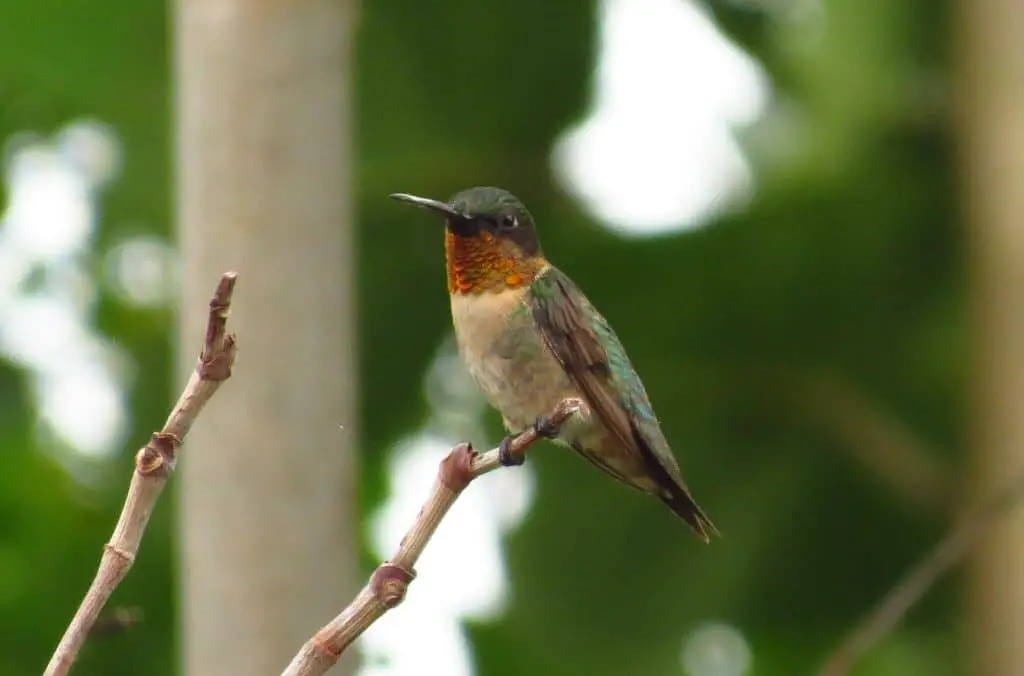
Fun Facts:
- These hummingbirds feed on nectar, particularly the nectar of both orange and red tubular plants such as honeysuckle.
- These birds are tiny and only weigh 2-6g with their wingspan being 8-11cm.
As the name suggests, these birds are known for their ruby coloured throats, but only the males of this species have these throats.
The females instead have white bellies and brown wings.
These birds are most often seen in meadows and orchards and males make their nests before the breeding season so that they are ready for the females.
Courtship displays for this hummingbird includes sweeping dives of 50ft and if the female is impressed, she will then enter the male’s territory.
Females will be the ones to raise the young on their own and males will mate with several females.
These birds are not permanent residents on Colorado and only tend to be seen in the eastern side of the state.
Usually they will only be seen in Colorado during their migration period but there may be the odd few that spend the breeding season in Colorado.
These birds will be attracted to your garden if you have tubular plants and suitable hummingbird feeders quite easily.
2. Black-chinned Hummingbird
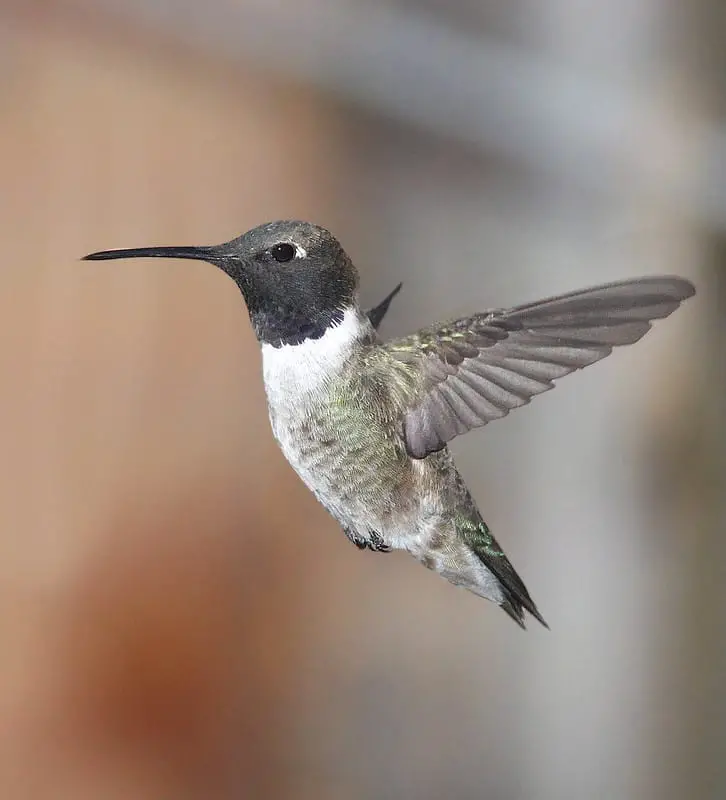
Fun Facts:
- They most commonly consume nectar from flowers but will also eat insects when they are more readily available.
- These birds are very small with a weight range of 2.3-4.9g and have an average wingspan of 11cm.
Both sexes of this hummingbird have bright white bellies whereas only the males will have dark necks with purple iridescent feathers.
There is not a lot of information on these birds as they have been studied less, but they are known to like spending times around rivers.
Males spend their times on a high perch observing and defending their territory, they will perform swooping dives from these perches as courtship displays.
There has not been any evidence to show these birds as being monogamous or forming breeding pairs.
These birds are most likely to be seen in Colorado during their breeding season and they are not usually permanent residents of the state.
They are most commonly found to the western half of Colorado.
Black-chinned Hummingbirds are very comfortable visiting gardens so to attract them you will only need a simple hummingbird feeder, adding tubular plants will also increase your chances.
3. Anna’s Hummingbird
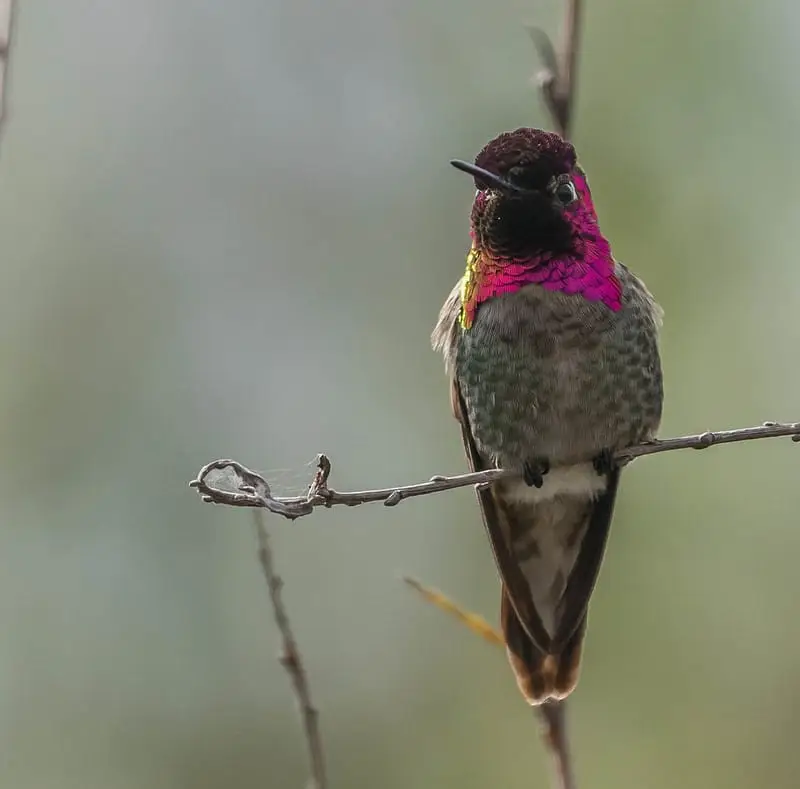
Fun Facts:
- These birds will eat nectar from many different flower species and they have also been known to steal insects from spider webs.
- These birds are medium sized for a hummingbird, weighing 3.6g.
Both males and females are mostly covered with green and grey feathers. The males also have distinct pink feathers on their necks.
You are most likely to find this bird in urban areas and they are very common visitors to gardens.
These birds are not monogamous and do not form breeding pairs but males still have courtship displays to attract females.
These displays include a performance of swooping dives and they will sometimes perform a courting song as they do this.
These hummingbirds are not monogamous and they will often mate with various individuals.
These birds are not as commonly seen in Colorado and usually only tend to be in the state outside of the breeding season.
They have only been seen in small patches of areas to the south of the state.
It is easy to bring these birds to your garden as long as you have the appropriate hummingbird feeders and some colourful tubular plants.
4. Costa’s Hummingbird
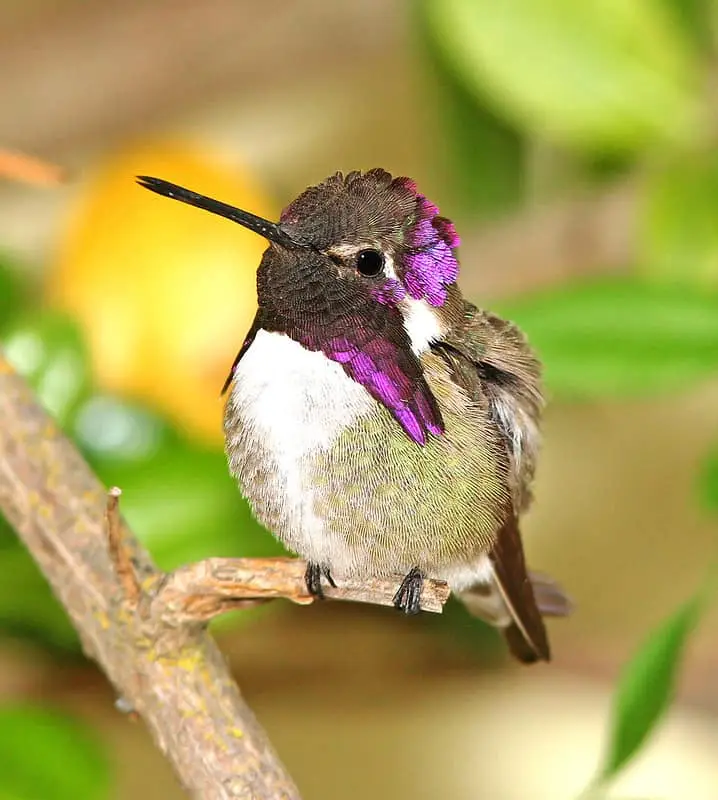
Fun Facts:
- These birds will feed on nectar and will also quite often feed on flying insects.
- Weighing only 2-3g they are slightly smaller on the hummingbird weight scale.
Most of the feathers on this bird are of duller and paler shades but the males have brighter feathers on their heads that are purple.
Males are very defensive of their territory and will pick several high perches from which to observe their territory and produce defensive calls to mark their area.
The males also have very strict courtship displays which they follow which contain various aerial dives.
These displays usually last about 30-40 seconds. The longest recorded instance of one of these displays has been 4 minutes.
These birds are not monogamous and males will not contribute to raising the young.
The Costa’s Hummingbird is not very common in Colorado and is usually only seen to the south of the state. It also tends to only visit outside of the breeding seasons.
A simple sugar feeder is all you need to try and bring these birds to your garden.
5. Broad-tailed Hummingbird
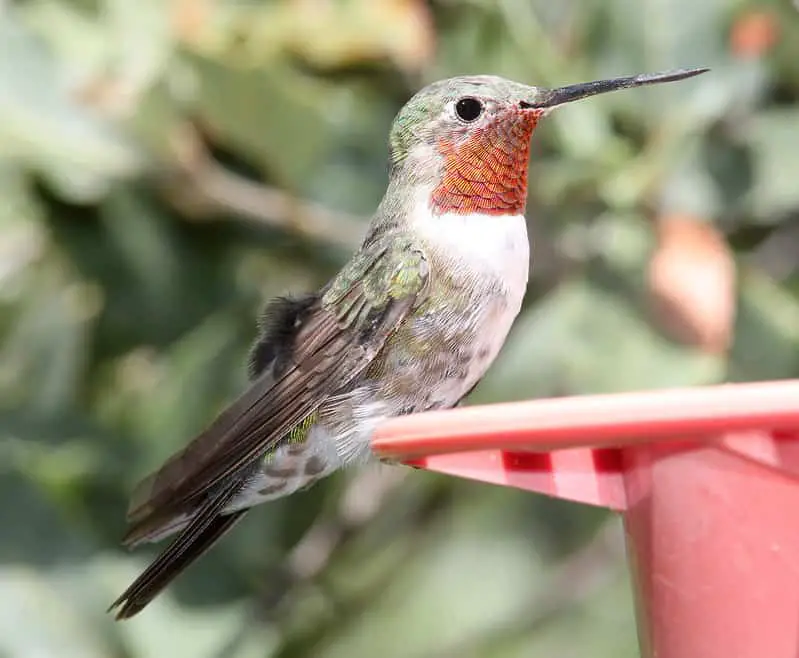
Fun Facts:
- These birds will feed on an even distribution of nectar and insects, mothers will feed insects to their newly hatched young.
- These birds are medium sized for hummingbirds and weigh 2.8-4.5g.
Males and females of this species have green feathers covering their backs but only the males have bright pink feathered throats.
These birds are not monogamous and will not form breeding pairs, males will mate with several females and the females will raise their young alone.
Broad-tailed hummingbirds have the ability to go into torpor when it is cold and they cannot find enough food, it is a miniature hibernation where they slow their heart rate to conserve energy.
These birds are one of the most common hummingbirds and can be found across the whole of Colorado.
They are most commonly seen during their breeding season. That being said, these birds do not tend to go to gardens, but you may be lucky and attract one with hummingbird feeders and tubular flowers.
6. Rufous Hummingbirds
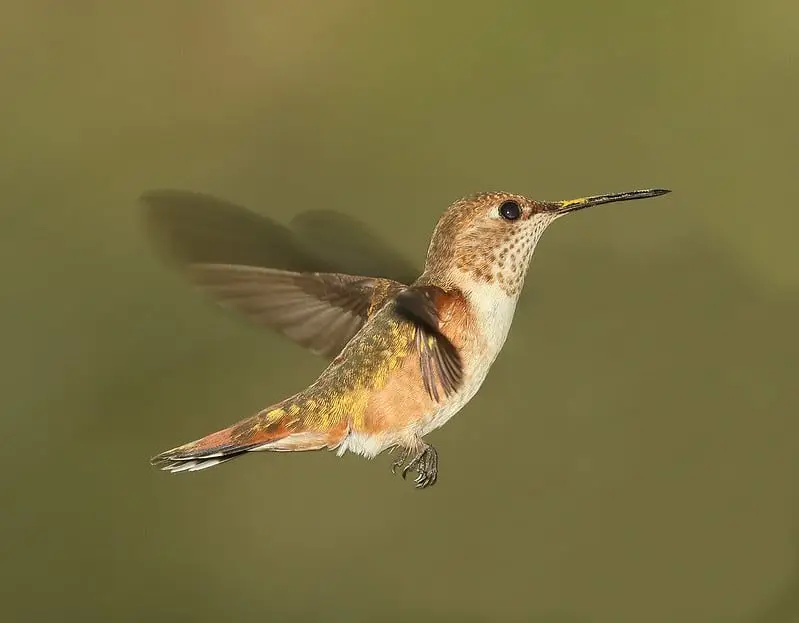
Fun Facts:
- Nectar from tubular plants is the main source of food for this bird.
- These birds are average sized for a hummingbird and weigh 2-5g.
The males of this species have bright orange shades of feathers whereas the females are covered in dull green and brown feathers.
These birds are very aggressive and will fight quite frequently over food sources.
They will fight with both their own species and other species of hummingbirds and males will even chase females away from food sources both in and out of the breeding seasons.
You are most likely to see these birds in open areas of land, they can be frequently seen flying long distances on their migrations.
These birds are quite common in Colorado and can be seen across all of the state.
However, they are not year-round residents and tend to mainly be seen during their migratory seasons.
These birds are frequent garden visitors as they will go to any food sources that they can find.
However, they may deter other species of hummingbirds from visiting so be careful.
7. Calliope Hummingbird
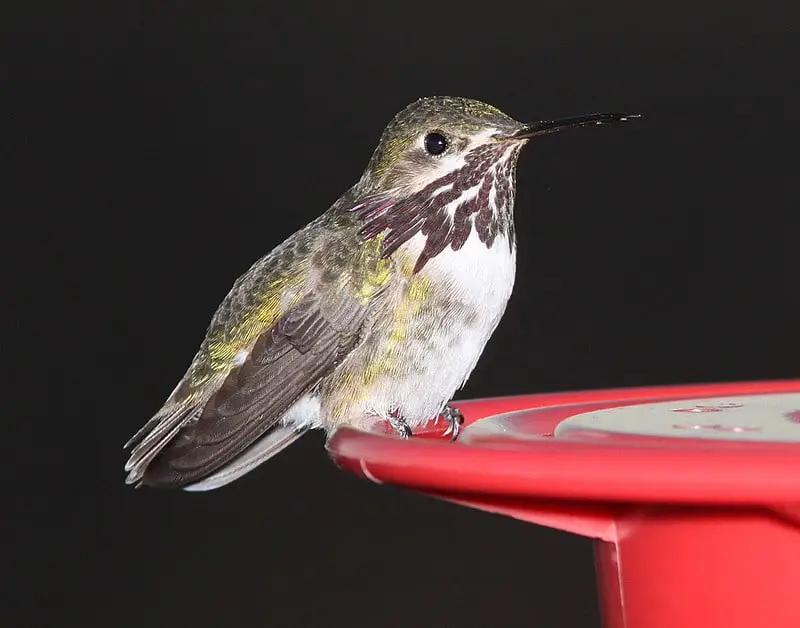
Fun Facts:
- These birds will consume nectar as their main food, usually from cupped flowers.
- Calliope Hummingbirds are on the smaller side only weighing 2.4-3.3g.
The Calliope Hummingbird has a bright white belly with the males of the species having scattered purple feathers across their plumage.
They are known for their courtship displays wherein the male flaps his wings at a frequency which produces a sound like a buzzing bee.
Males of this species are very defensive and will often spend their time on a high perch observing their territory.
These birds are usually only seen in Colorado during their migration period. Even then they are not found across the state.
They are usually only seen in the western half of Colorado and are found in more open spaces.
These birds tend to stay in the wild rather than visit gardens, but if you are lucky a sugar water feeder and tubular plants will attract these hummingbirds to your space.
8. Broad-billed Hummingbird
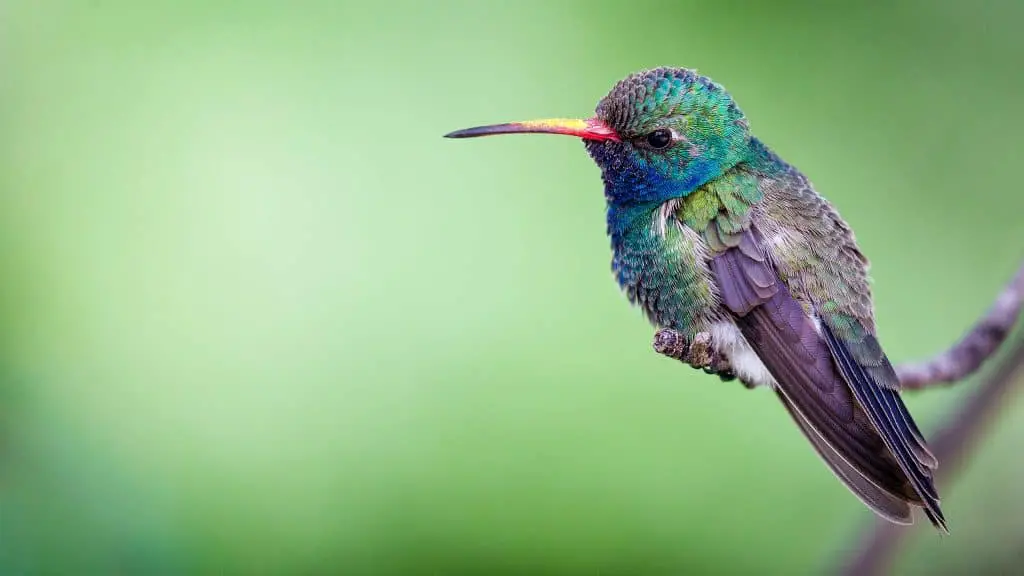
Fun Facts:
- Nectar is the primary food source for these birds but they will also eat insects that they find on plants.
- These birds are average for a hummingbird and have a weight range of 3-4g.
These birds are covered in bright blue and green feathers and they have a long, thin and bright red bill.
They are most commonly seen in open areas such as canyons and meadows.
Males will call for females from their perches to attract them into their territory. Once a female enters the male’s territory the male will then perform a courtship display for them.
Males will sometimes perform the same display to other males of the species, this is thought to be a warning display but not much work has gone into studying this particular behaviour.
Breeding pairs do not stay together, and females raise their young by themselves.
There is not a lot that is known about the specific ranges of the Broad-billed Hummingbird.
There have been a number of sightings in Colorado of this bird, but it is not as common as many of the other hummingbirds we have talked about.
These sightings have most commonly been spotted in the southern areas of the state.
Due to their range, they are not frequent garden visitors. But they can be attracted by a sugar water feeder, without any food colouring, they also tend to visit brightly coloured flowers.
Make sure to keep your feeder full during winter as this is when you are most likely to see one.

More Articles.

What does it mean to see a Phoenix in your dream? (Symbolism and Meaning)
Seeing a Phenoix in your dream can symbolize a fresh start, a new beginning, or
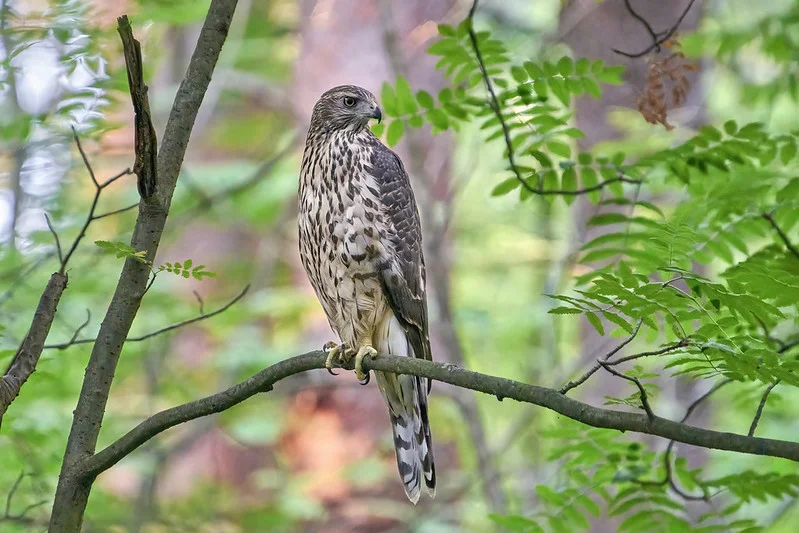
What Hawks can you see in Germany? (3 Species with Pictures & Sounds)
What Hawks can you see in Germany? There are 3 different species of Hawks that
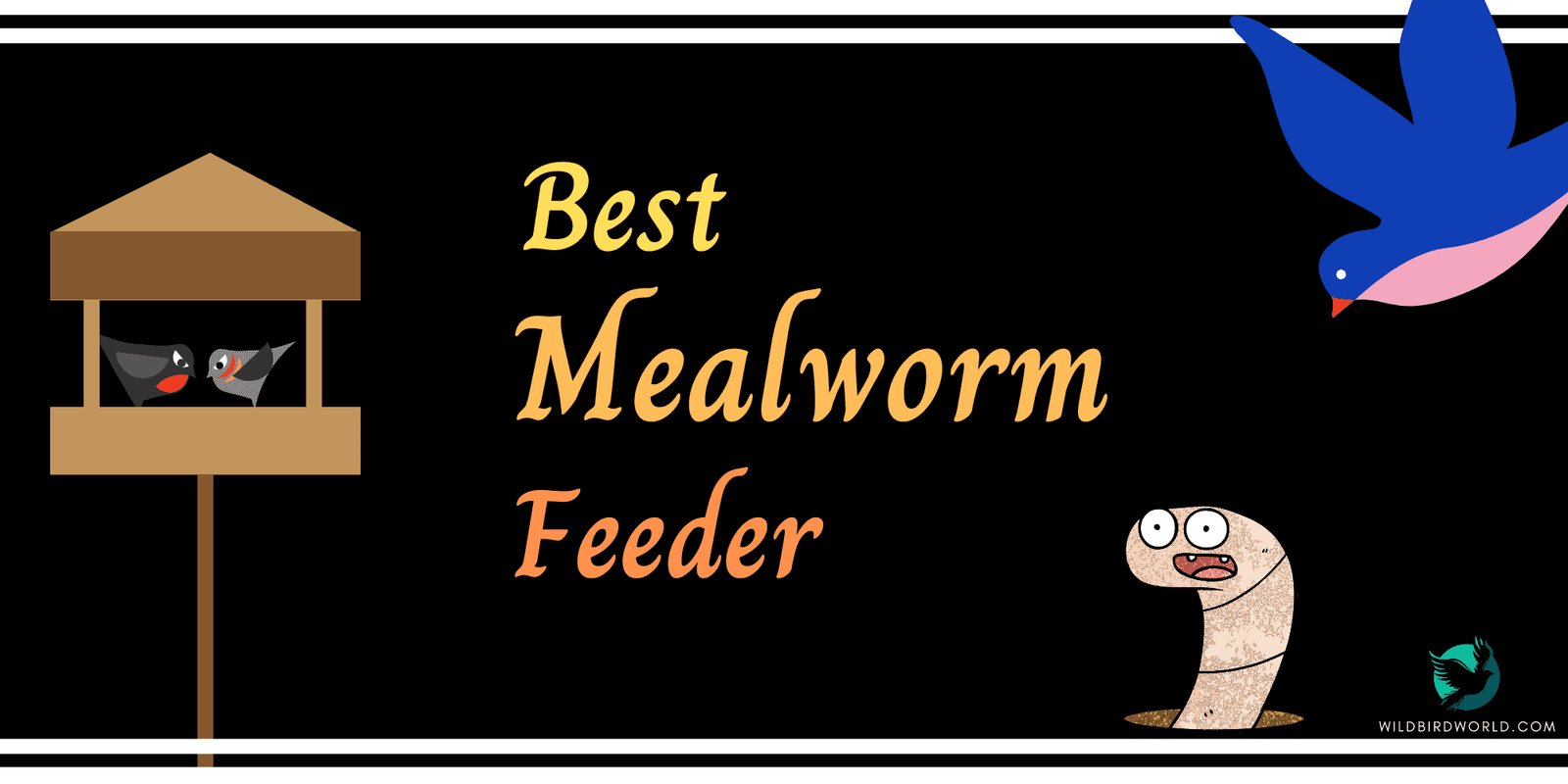
Though some birds are partial to seed and other popular forms of bird feed, some

About Us
We are avid bird-watchers who recently retired, allowing us more time to travel the world. Fortunately, we have managed to visit numerous countries around Europe, Asia, and America. Watching and photographing birds has been a passion for many years and we are making the most of the extra time on our hands!
